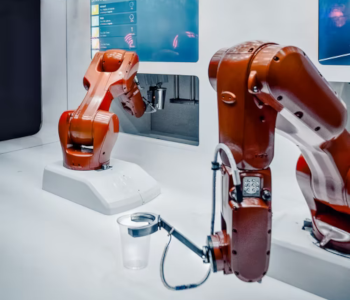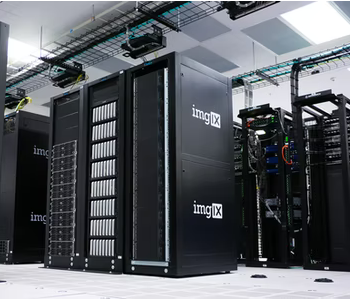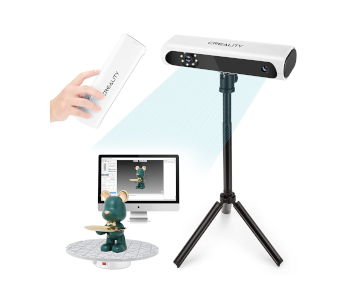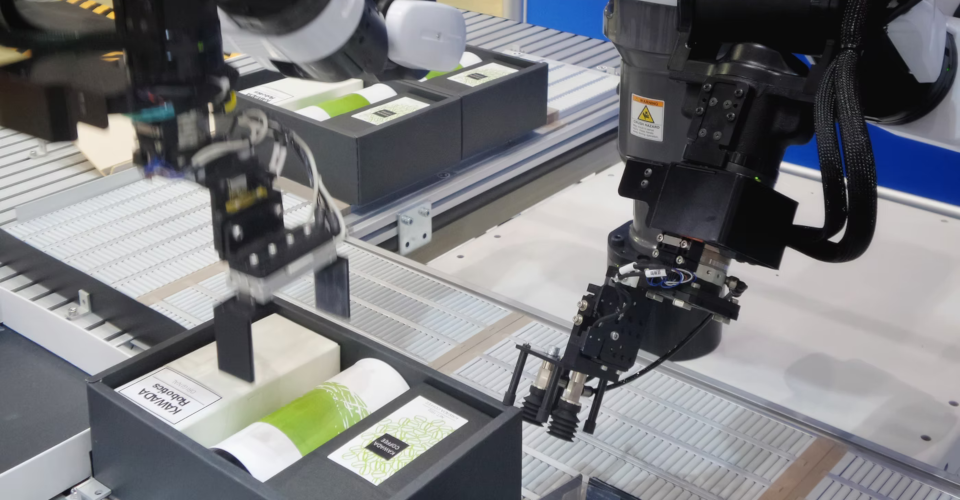Quality 4.0 and The Role of Automated Quality Control
Quality control is an essential part of any fabrication or manufacturing process. For decades, most quality control involved inspection by human operators. Although this method was cheap and easy to implement, it was not always reliable.
As the manufacturing industry transitions toward Industry 4.0, there is now a growing consensus that quality standards also need to improve. This is the primary concept behind Quality 4.0. What exactly is Quality 4.0 and how can its standards be achieved?
What is Industry 4.0?

The so-called “Fourth Industrial Revolution” focuses not just on automated processes, but on manufacturing systems that can be classified as “smart.” The emphasizes the importance of large-scale data gathering and processing and the ability of machines to develop some sort of intelligence.
In Industry 4.0, processes are not just independent of human intervention but are ideally better than their human-aided counterparts. As such, the technological infrastructure needed for Industry 4.0 processes is some of the most cutting-edge and innovative that has ever been developed. Concepts like the Internet of Things (IoT), big data, and machine learning will have to be commonplace for Industry 4.0 to become a standard.
Right now, there are already some examples of institutions and companies adopting the Industry 4.0 mindset. Self-driving vehicles are some of the most popular examples of what the technology of Industry 4.0 can create. These vehicles are outfitted with an array of sensors that allow them to gather data about their surroundings. This data is then processed by a computer to allow them to navigate even without human intervention.
Why human inspection can no longer cut it
As the industry moves towards more automation, it becomes necessary to enact quality control standards that are no longer as dependent on human quality inspectors. For the longest time, the human eye has become used as the ultimate quality check – it moves quickly, can adjust to different lighting conditions, has a huge field of view, and can detect very small details with some training.
However, human-based inspection can no longer be sustained. Rapidly aging countries like Europe and Japan are suffering from a dwindling workforce. With a smaller labor force, companies also have to deal with higher personnel costs, more frequent training expenses, and faster employee turnover.
Although industries have relied on human-based inspection for decades, the limitations of such a method also cannot be denied. The performance of a human inspector can be influenced by any number of variables, such as fatigue or a dwindling health condition.
There could also be a lot of variability from one inspector to the next. Even in companies with well-defined quality standards, there are times when quality inspection becomes a matter of personal judgment. A change in inspector within a single day of operations can result in imprecise quality standards.
The cost and time spent in training inspectors also cannot be underestimated. Inspectors require specialized training, making it a difficult task for companies to scale up their quality inspection capabilities. These inspectors also need to go undergo periodic training and assessment to make sure that they still have the skills needed for the job. This takes up a lot of resources for the company and can be quite complicated logistically.
Ultimately, it makes sense to come up with ways to automate quality control for any company that is transitioning to Industry 4.0. Since this new paradigm focuses on smart systems, sensors and systems that are better than or equal to human inspectors already exist. This is the impetus behind the Quality 4.0 movement.
Fundamental principles of Quality 4.0

As a complement to Industry 4.0, Quality 4.0 focuses on speed and efficiency by way of smart technologies. There have been many different approaches to attain Quality 4.0, but these efforts focus on a few common areas:
Reduced errors
As it should, quality remains the top priority of Quality 4.0. Through the use of automated systems, the goal of Quality 4.0 is to completely eliminate issues that can be caused by human error. This reduces the chance of products getting rejected, thus reducing the throughput of any manufacturing facility and increasing profits.
Increased adaptability
A central concept of Quality 4.0 systems is “learning.” This means that a particular sensor setup should be able to accommodate different product types. If necessary, the system can also be retrained for changing quality standards or for an entirely different product. This should take less time than having to train an equivalent number of human inspectors.
Faster problem resolution
As with any automated system, Quality 4.0 inspection is expected to be a lot faster than human inspection. If it can keep up with the rate of production, Quality 4.0 makes it possible to do close to 100% inspection of products. This can then be associated with higher levels of quality and reliability. Moreover, smart systems can have pre-determined methods to deal with non-conforming products, lessening the need for downtime.
Root cause detection
One of the ultimate goals of Quality 4.0 is for the system to be trained not just to detect errors, but also to determine why the errors have happened. The idea is that quality inspection is only one part of a fully integrated production system with a functioning feedback loop. If one batch of products has too many errors, the system can automatically adjust to make sure that such errors are avoided.
Reduced need for human intervention
Despite all the promises of Quality 4.0, most of its proponents agree that human intervention cannot be completely removed. At best, human inspectors will only have to deal with the “reject pile” of a smart quality inspection system. This is still an improvement in terms of the need for skilled labor and specialized training.
As jaded as it may seem, transitioning to Quality 4.0 ultimately aims to maximize profits and reduce costs. However, this technology also opens windows to new possibilities and ways of doing things that would not have been feasible a decade ago.
Essential technologies for Quality 4.0
Many of the technologies needed for Quality 4.0 mirror those that are essential for the entire Industry 4.0 paradigm. The main areas of focus are still the same – large-scale and rapid data collection, centralized data processing, integrated systems, and systems that can learn. However, there are certain sensors that are specialized for quality inspection:
3D scanners

A 3D scanner is an active or passive sensor that creates a digital copy of an object. 3D scanners have become quite common nowadays, especially since the new generation of iPhones comes with LiDAR sensors. Both LiDAR scanning and photogrammetry are common methods used for 3D scanning.
Although there is certainly huge potential for digitization by 3D scanning, the technology may have to be tweaked heavily before it can be used for Quality 4.0. 3D scanning is a very finicky process. It requires that the object be positioned perfectly and that all angles are covered by the scanner. This can prove too time-consuming for a high-volume production line.
However, high-definition 3D scanning can be useful for error identification and root cause analysis. Digital copies of defective products can provide valuable information for quality control inspectors.
Deep learning visual sensors
Despite being seemingly simple, visual sensors are still expected to dominate a Quality 4.0 workflow. In essence, these are cameras that have been “trained” to spot a product that is up to quality standards. If a product passes through the camera that does not comply with the training images, then that product is set aside in a potential reject pile.
Of course, the camera is only a part of an entire system with deep learning capabilities. More importantly, visual data is handled by a software based on artificial neural networks. A single camera array can be trained to handle different product types, making visual sensors the ultimate inspection tool in terms of adaptability.
IoT-based sensors
Not all environments are compatible with 3D scanning or visual sensors. In some cases, the products can be obscured by poor lighting, smoke, or dust. Alternative sensors that use microwaves, acoustics, or radar can be useful in such scenarios.
The good thing about these sensors is that they can assess the product beyond just the parameters that are visible to visual sensors. For instance, a conductivity-based sensor can measure the density of a metal part. There are even ultrasound sensors that can detect the presence of internal defects in finished parts.
Ultimately, all the data derived from the sensors will have to be relayed and centralized. This is the same concept used in IoT devices. Cloud-based data processing and storage can help a facility generate a central intelligence that can oversee all the critical aspects in production.
Data science
One thing that companies need to realize is that adopting a Quality 4.0 strategy is more than just purchasing the systems and devices. The strategy needs to have a solid foundation in data science. This involves identifying the necessary quality parameters, coming up with acceptable data thresholds, and establishing the relationship of measurable data with the company’s quality standards.
Although technology and science certainly play a big role in transitioning to Quality 4.0, companies would also do well to consider how making such a change will affect company culture. After all, the system will still be run by people.
Industry 4.0 may still be a new concept, but similar attempts to overhaul entire processes have failed in the past when companies have failed to engage the workforce. Involving people in the decision-making process and in generating data science models is a good way to have them invested in the undertaking. This is the best way for the people themselves to be the drivers for change.
Final thoughts
As more companies strive to attain Industry 4.0 standards, it has become apparent that quality control also needs an evolution. This has created the concept of Quality 4.0 – quality control based on automated systems and smart technologies.
Automated quality control isn’t exactly new. For years, many manufacturing technologies have relied on camera-based visual inspection. The novel factor in Quality 4.0 is that these systems can now learn and adapt. This makes automated QC inspection systems a lot more versatile and easier to deploy even for multiple product lines.
Quality 4.0 seeks not to replace, but to augment human intelligence. It seeks to attain the best combination of human judgment and technology. Such an evolution is inevitable as demonstrated by the fact that forward-thinking insiders are already talking about the possibilities of an Industry 5.0.

